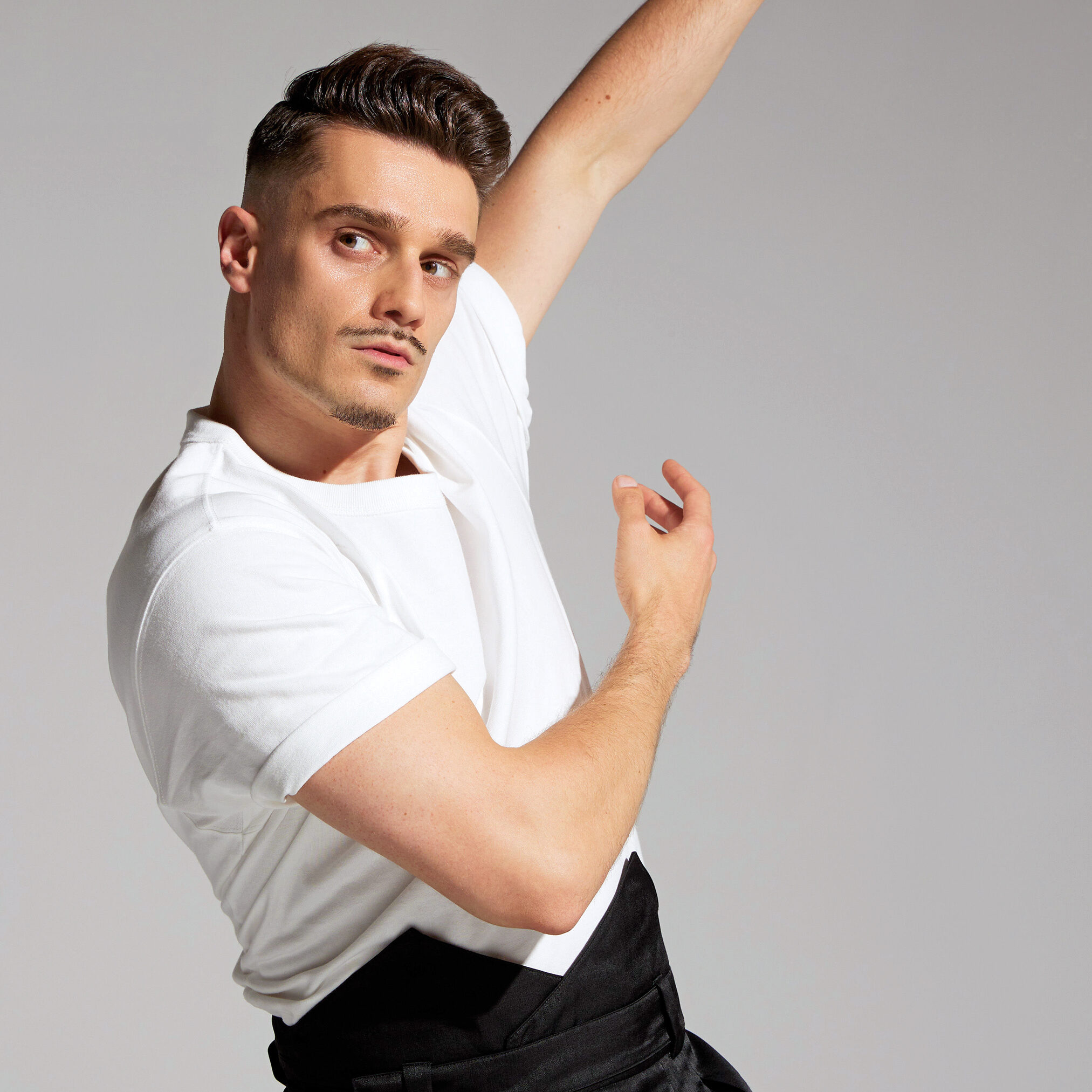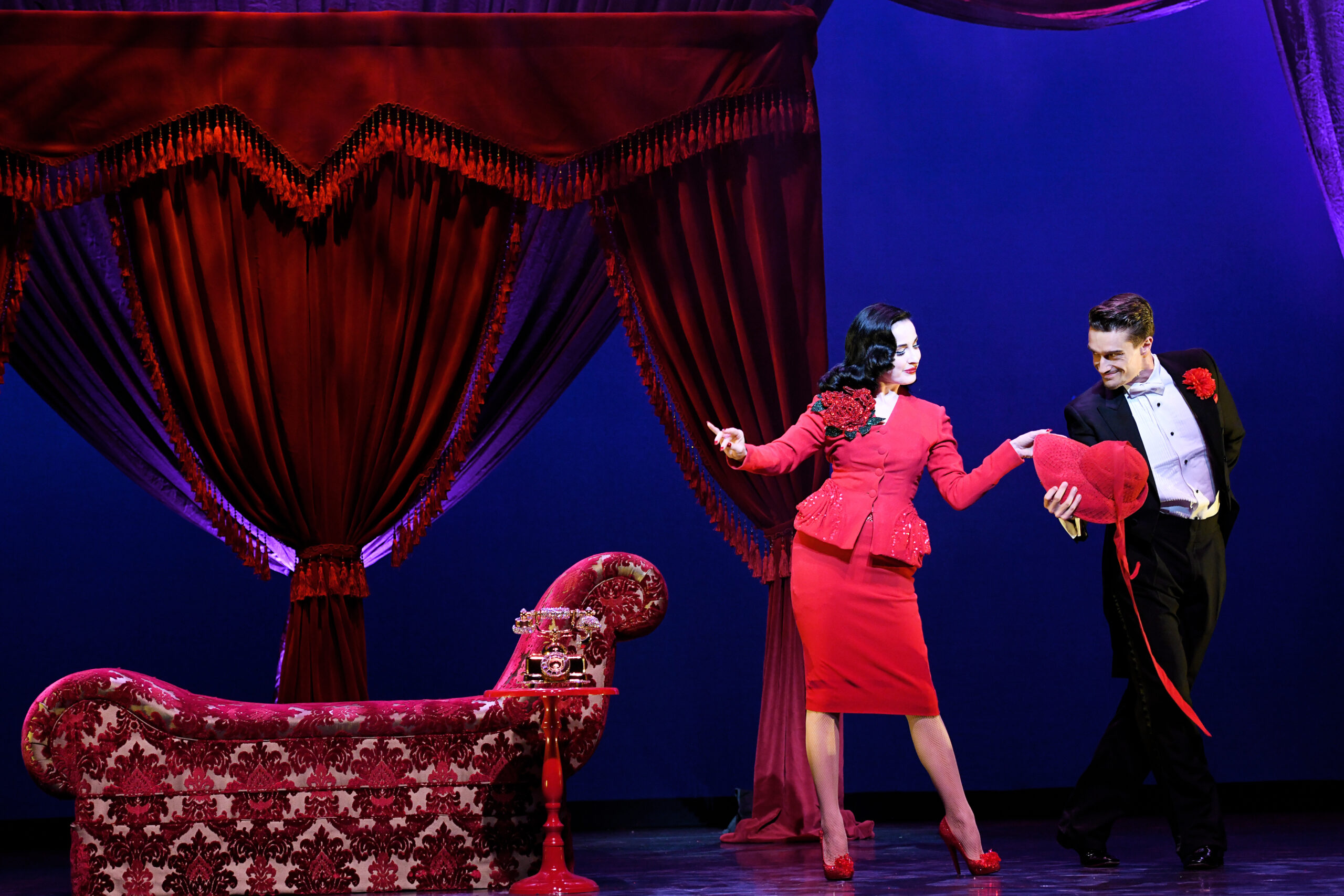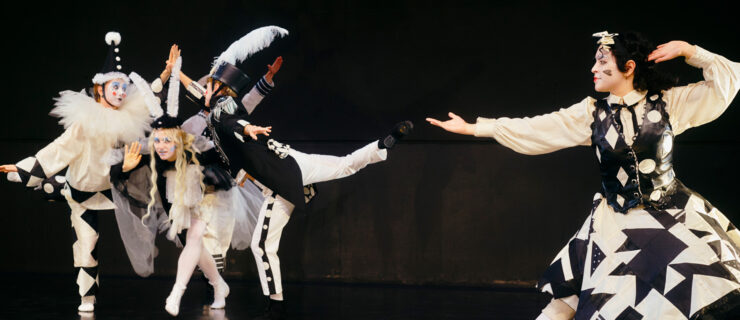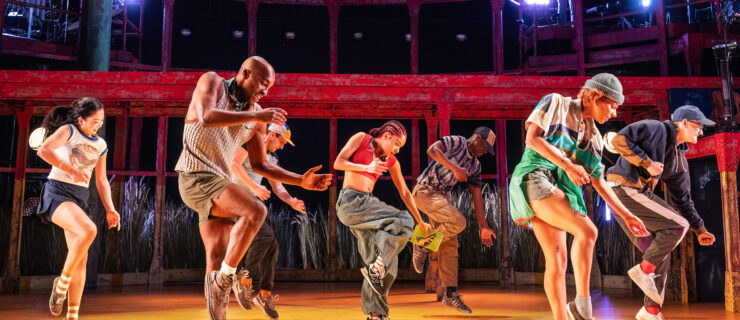How Alek Paliński Juggles Being a Performer, Choreographer, and Rehearsal Director for Burlesque Star Dita Von Teese
Some artists thrive onstage, dancing backup for the biggest stars in the world. Others shine behind the scenes, choreographing and managing the details required for a world-class show. Alek Paliński does it all.
Paliński moved to Los Angeles from his native Poland in 2015, looking for bigger opportunities after competing on “So You Think You Can Dance Poland” and performing with the top recording artists of his home country. The following year, he landed a job that would take his career to new heights: He was chosen to be a dancer for the burlesque superstar Dita Von Teese, joining the all-male Vontourage on her Strip, Strip, Hooray! tour.
Seven years later, Paliński—whose background includes ballroom, contemporary, jazz, and hip hop—has become a principal dancer, choreographer, and rehearsal director for Von Teese. For her Glamonatrix tour, which began in 2019 and ended in February after a two-year, pandemic-imposed pause, his offstage duties ranged from auditioning dancers to managing lighting cues and spiking props. Paliński also continues to dance for other artists, including a recent tour with the reggaeton sensation Karol G.
Von Teese and Paliński are preparing for a Las Vegas residency expected to open later this year. He will serve as a principal dancer and her creative associate responsible for choreography.

Strip, Strip, Hooray! was one of my first jobs after moving to L.A. I continued dancing with Dita, and, eventually, I choreographed a number for a new show of hers. I proved myself with that. Then for the next show it was like, “Can you choreograph multiple numbers?” It was the first time I could go back to choreography professionally after doing it in Poland, because after moving here, I had to start from scratch.
Dita saw some of my passion projects and concept videos, and she asked me, “Did you edit this yourself? Is this your concept?” Based on that, she started trusting me more with the creative side of her show. Even with big artists, sometimes you don’t need huge credits. They can see a passion project you did with no budget, and if it’s done really well and it makes them feel something, they can
trust you.
What makes Dita’s tours different from other commercial tours is that there’s a lot of individuality, and solo performances from the backup dancers. Some of the solos are burlesque performers with their own acts, and some we create for dancers who were not previously burlesque performers. A solo is very different from being a backup dancer; there’s so much playing with the audience in being the only person onstage.
In creating a solo, there is a certain amount of tapping into the performer’s natural style and ability. What I typically do is create the vision, and I love to be prepared with the steps before rehearsal rather than creating them on the spot. I teach it, and for those slow moments, I give an intention. Then, I see what the performer does with it. It’s allowing them to bring life to it, identifying their superpower and letting them live in that realm. You can adjust the expression, the story, or certain steps or positions, so they can really shine.
In an audition, the first thing we look for is stage presence. You have to be able to stand and be electrifying.
With choreography I love playing with stillness; the contrast between intense, sharp moments and then just being there and not moving for a while. I learned so much in working with Dita—how you can get the audience to react exactly how you want by sectioning the movements correctly and playing with the music.
I always wanted to be a versatile dancer, and I think that helps me now with choreography for shows like Dita’s. We had one number that’s jazzy and flowed a little bit from elements like West Coast swing and jazz. There’s another with a huge cake, a Marie Antoinette–inspired performance. Dita pulled inspiration for that from Madonna’s “Vogue” performance at the 1990 MTV Video Music Awards.
My days on tour are longer, because I have to come to the theater early on show day and spike all of the props with the crew, and make sure of where everything’s going to land. In every theater, the sight lines are different. Sometimes we have to go narrower with the props, and sometimes you can spread them out more. We make sure they are seen from each angle. When the dancers come in, we have a crew-and-cast meeting for all of the safety measures. After that, we run some of the numbers, and then I clean it. I watch it on video and make any adjustments.
Especially for a new show, I’m learning new things, but I also have to make sure everyone else knows what they’re doing and be able to answer their questions. What’s challenging is making sure that I’m on top of my stuff as a dancer, but taking care of everyone else as a leader at the same time. I try to give as many tools to new dancers as possible, so they can be self-sufficient. For example, there are a ton of costume pieces for each number, because we take off a lot of layers. The dancers make a list for each number.
There are a lot of moving parts in a touring show, and things constantly change. Sometimes, you’ll change the order of the layers Dita takes off, how she’s taking them off, or she’ll add or take a piece away. That then affects the timing of our choreography, and we have to figure out how to fit it. That keeps it exciting.
We’re brainstorming ideas about a show that’s a hybrid of our touring show and a Vegas revue. Dita wants it to have show girls and show boys. It would allow us to create bigger performances and have more dancers. It’s my dream to create grand numbers that are dance-heavy and hire people who have been consistently auditioning and showing their best.




